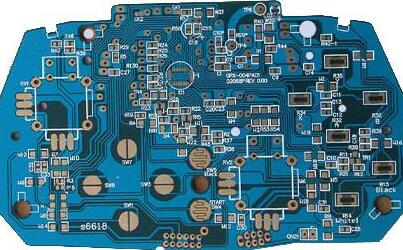The relationship between the factors that affect the impedance of the multilayer circuit board
Under normal design components:
1. The thickness of the dielectric layer is proportional to the impedance value.
2. The dielectric constant is inversely proportional to the impedance value.
3. The thickness of the copper foil is inversely proportional to the impedance value.
4. The line width is inversely proportional to the impedance value.
5. The ink thickness is inversely proportional to the impedance value.
So we should pay attention to the above points when controlling impedance.
Printed circuit boards are usually quickly prototyped in a dedicated model workshop before being put into mass production. This point explains how it affects impedance when different solder mask application methods are used in prototype workshops and batch manufacturing. We will explain how to use the Si8000 field effect solver to predict the final impedance change of the LPI-coated differential line due to the uneven coating thickness (especially between dense differential lines). We briefly mentioned the most popular liquid photosensitive solder resist (LPI) application method, and noted that these different methods can cause the difference between the impedance of the finished circuit board and the design value.
PCB silk screen printing
The silk screen printing method is to use a squeegee to apply LPI to the circuit board through a tensioned mesh cloth. The ink deposition is controlled by the difference in the number of meshes and the printing settings, speed, angle and pressure. Semi-automatic screen printing using LPISM is the most popular solder mask application method today. The "dam" effect of the edge of the line in the direction of the squeegee movement will produce uneven coating. Due to the pressure of the mesh layer at the line crown, the coating will be too thin and in the case of a differential line, the surging effect of the space between the lines must be considered. All of these will affect the final impedance.

Curtain coating
Curtain coating technology means that when LPI is applied, the printed circuit board seems to pass through a sheet, or curtain, which is a low-viscosity ink sprayed through a fine groove. Curtain coating is widely used and has a high degree of recognition in the board industry. The curtain coating shows a different coating phenomenon unique to its own method-"masking". Compared with the edges of those lines, when the solder mask on the trailing edge of the line parallel to the screen is reduced, the shielding method is used. When the line passes through the screen, a dam-like effect is produced, which will cause the accumulation of solder mask on the edge of the line and reduce the solder mask on the trailing surface of the line.
Electrostatic spraying
In electrostatic spraying technology, LPI uses a rotating bell-shaped nozzle to atomize the ink and spray it on the PCB with the help of compressed air. The LPI generates a negative charge and grounds the PCB so that the LPI can be connected to the board. However, the electrostatic effect is likely to cause the LPI to be attracted to the copper foil area, resulting in unsatisfactory uniformity of the coating.
Air spray
When applying air spray, LPI uses single or multiple spray guns. The ink is atomized by mixing with reduced pressure air. Air spraying can generally achieve uniform coating effects, but some user problem reports indicate that due to overlap or interference between adjacent spray guns between plates, the spraying of multiple spray gun systems will easily form a "band-like" result.
If one technology is used to manufacture pre-production engineering samples, and another technology is used to manufacture the final product, this will make the problem even more serious. If the thickness of the LPI coating varies greatly between the lines, the actual differential impedance value of the line on the finished board will be a few ohms different from the design value.